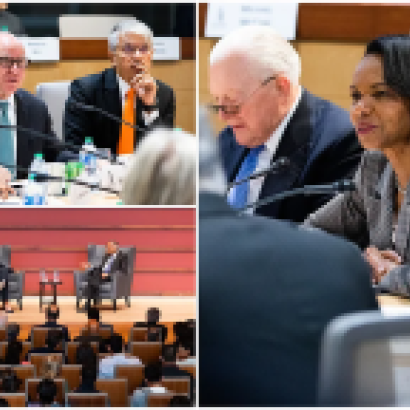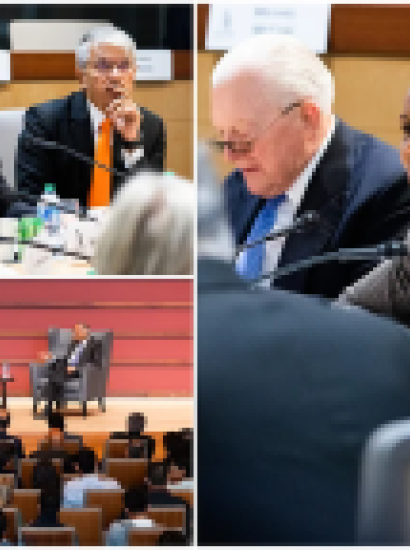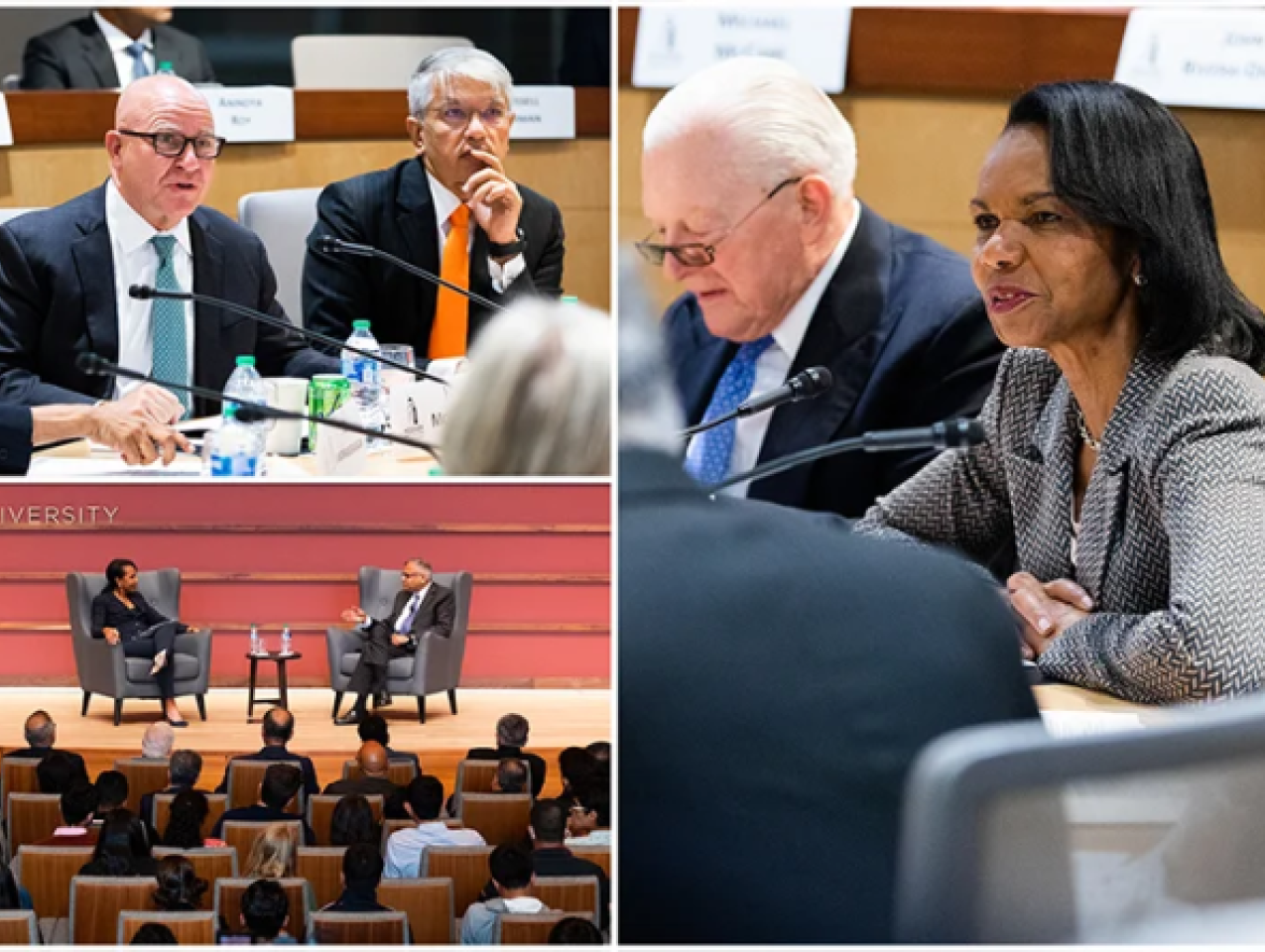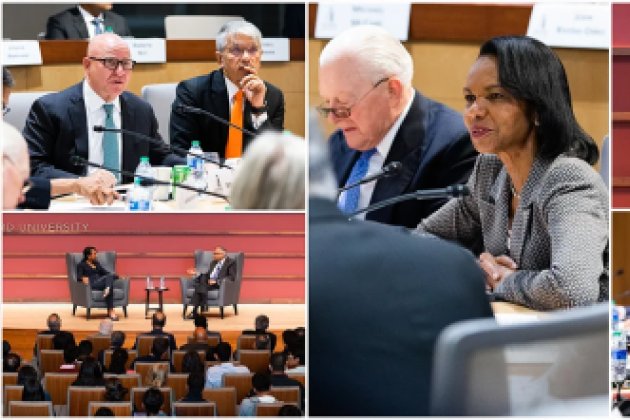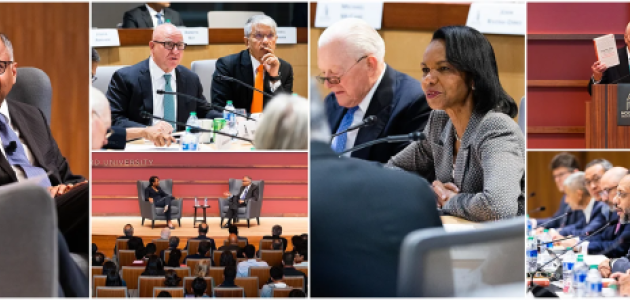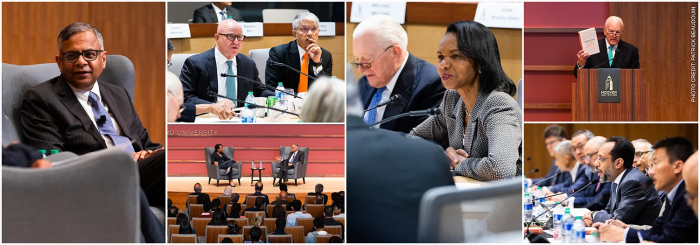
Hoover Institution (Stanford, CA) – N. Chandrasekaran, chairman of Indian conglomerate Tata Sons, joined Hoover Institution director Condoleezza Rice for a wide-ranging conversation about India’s potential in the next decade as a pivotal actor in advancing global security and prosperity.
The event, which took place in Hauck Auditorium on Tuesday, May 17, was the second installment of new speaker series, “Examining the US-India Landscape,” that is part of Hoover’s program on Strengthening US–Indian Relations, chaired by David Mulford, distinguished visiting fellow and former US ambassador to India. On Wednesday, May 18, Hoover and Tata Sons jointly hosted scholars, policy makers, and business professionals for a daylong workshop that explored ways in which the US and India can collaborate on a host of issues. These include economic recovery in the post-pandemic period, the buildup of resilient supply chains, the creation of renewable energies, the development of environmentally sustainable economic policies and practices, and security in the Indo-Pacific region.
Chandrasekaran, who worked his way to the top of Tata after beginning his career there as an engineer in 1986, provided an overview of the breadth of the company, which began over 150 years ago in the coastal city of Mumbai. He described the vast nature of Tata’s holdings, which include steel, telecommunications, financial services, consumer products, and several other industries.
Chandrasekaran also detailed the social and economic development of India after it achieved independence from British rule in 1947.
In the past seventy-five years, India has made significant gains in several important categories, including increases in literacy rates, life expectancy, and population growth, as well as the lifting of one hundred million people out of poverty. At independence, more than 50 percent of the Indian economy was agriculture based and there were no significant industries.
“All of that has changed,” Chandrasekaran explained. “Today, we represent 7 percent of world GDP,” he said, adding “nobody would have predicted that we would be such a powerhouse in technology.”
Chandrasekaran maintained that despite these accomplishments, India still faces daunting challenges, including substantial wealth inequality. He said that many parts of India lack basic sanitation, and in the country at large, the rate of female work force participation is very low (25 percent) by international standards, largely resulting from the burdens of family life and limited access to affordable transportation.
Chandrasekaran asserted that today, India demonstrates enormous income growth potential but must leverage its vast human resources and wealth for large-scale production. It needs to build upon its already very skilled workforce, which has largely been absorbed into its thriving technology industry. He maintained that the private sector also needs to capitalize on significant policy reforms that have increased incentives for investment.
Chandrasekaran also believes that the worldwide economic disruption—caused by factors such as the pandemic, China’s aggression in the Indo-Pacific region, and Russia’s invasion of Ukraine—has presented an enormous opportunity for the Indian economy to be a leader in building global supply chains that are resilient in addition to being efficient. Supply chains that are vulnerable to disruption currently include those that facilitate the manufacture and export of energy sources, semiconductor technologies, and medical products that mitigate the spread of pathogens such as COVID-19.
“We need to execute,” Chandrasekaran said about the opportunity for India at this moment in history. “We need to execute flawlessly with speed.”
Click here to learn more about the Hoover Institution’s program on Strengthening US–India Relations.








